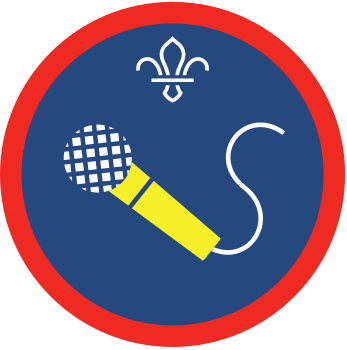Local media mogul
You’ll need
- Pens or pencils
- A4 paper
- Bowls
- Access to the internet
- Examples of media
Before you begin
- Collect examples of news stories from different forms of local media.
- You could include local newspaper articles, screenshots from the local paper’s website, or links to clips from local radio or TV.
- Fold each example up (if it’s on paper – if it’s a link, write it down and fold this up) and put them all in a bowl.
Explore the story
- Everyone should split into small groups.
- One person in each group should choose a piece of paper from the bowl – it’ll either be an article or a link – if it’s a link, they should follow it.
- Each group should spend ten minutes figuring out the media’s audience, theme, geographical remit, and how often it’s published. For example, it may be from a newspaper targeting local adults, an article about politics, covering the local town, that publishes weekly.
- Everyone should gather back together and share what they’ve learned. Can people help each other to figure out the answers to any of the gaps?
Reflection
This activity was all about communicating. Media has lots of messages – it’s not just about the facts an article or report contains. How did everyone figure out the audience and topic of their media? Was it easy or tricky? Did people all have the same ideas, or did they have to discuss them to reach a conclusion?
This activity also helped people to develop skills. Why might it be useful to think about the audience of a piece of media? Everyone should think of some media they engage with – what do they like about it? Does the creator target people like them as an audience (for example, young people, or people also interested in the topic)? Thinking about the motivations behind media and who the creator is trying to appeal to helps people critically evaluate how trustworthy or representative it may be. Can anyone think of an example of how a piece of media may be less trustworthy if it’s only appealing to one audience? For example, an article may only tell one side of a story – the one its audience already agree with.
Safety
All activities must be safely managed. You must complete a thorough risk assessment and take appropriate steps to reduce risk. Use the safety checklist to help you plan and risk assess your activity. Always get approval for the activity, and have suitable supervision and an InTouch process.
- Music and films
Make sure music and films are age appropriate for the youngest person present.
- Online safety
Supervise young people when they’re online and give them advice about staying safe. Take a look at our online safety or bullying guidance. The NSPCC offers more advice and guidance, too. If you want to know more about specific social networks and games, Childnet has information and safety tips for apps. You can also report anything that’s worried you online to the Child Exploitation and Online Protection Command. As always, if you’ve got concerns about a young person’s welfare, including their online experiences, follow the Yellow Card to make a report.
- Phones and cameras
Make sure parents and carers are aware and have given consent for photography.
If anyone needs a certain format (for example, large print or audio described), make sure at least one example is suitable. If anyone struggles with reading, encourage someone in each group to volunteer to read written media out loud so everyone can join in (and no one’s singled out).
All Scout activities should be inclusive and accessible.
This is all about local media – you could take it further and organise a visit to a local newspaper or a visit from a local journalist.
